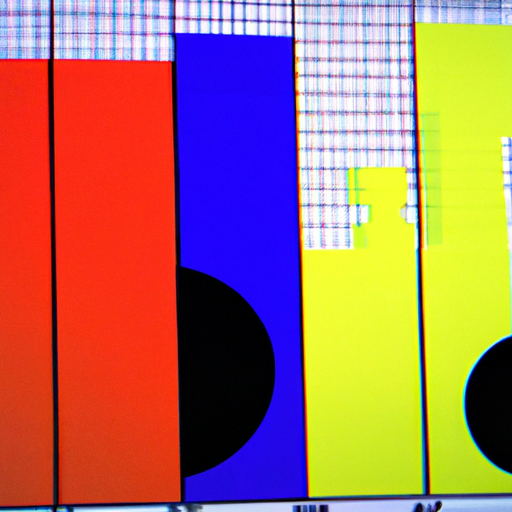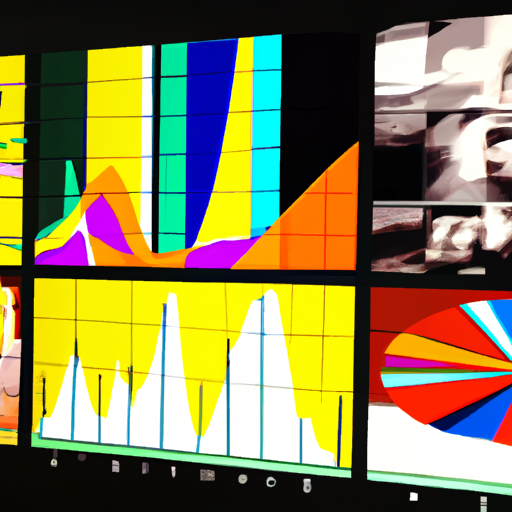
-
Table of Contents
Visualizing Data through Innovative Graphic Charts

Data visualization is a powerful tool that allows us to understand complex information quickly and effectively. By presenting data in a visual format, we can identify patterns, trends, and insights that may not be apparent in raw data alone. In recent years, there has been a surge in the development of innovative graphic charts that take data visualization to new heights. In this article, we will explore some of these innovative graphic charts and their applications in various fields.
The Power of Data Visualization
Data visualization has become increasingly important in today’s data-driven world. With the exponential growth of data, it has become crucial to find ways to make sense of the vast amounts of information available to us. Traditional methods of data analysis, such as spreadsheets and tables, can be overwhelming and difficult to interpret. This is where data visualization comes in.
By representing data visually, we can simplify complex information and communicate it more effectively. Visualizations can help us identify patterns, trends, and outliers, enabling us to make data-driven decisions with confidence. They can also help us tell compelling stories with data, making it easier for others to understand and engage with the information.
Innovative Graphic Charts
1. Heatmaps: Heatmaps are a popular type of graphic chart that uses color to represent data values. They are particularly useful for visualizing large datasets and identifying areas of high and low values. Heatmaps are commonly used in fields such as finance, healthcare, and sports analytics. For example, in finance, heatmaps can be used to analyze stock market performance, with red indicating a decline in value and green indicating growth.
2. Sankey Diagrams: Sankey diagrams are a type of flow diagram that visualizes the flow of data or resources between different entities. They are often used to show energy flows, such as the distribution of energy sources or the energy consumption of different sectors. Sankey diagrams are also useful for visualizing customer journeys, illustrating the path customers take from initial contact to conversion. By visualizing these flows, organizations can identify bottlenecks and optimize processes.
3. Chord Diagrams: Chord diagrams are circular visualizations that show the relationships between different entities. They are particularly useful for visualizing network data, such as social connections or trade relationships. Chord diagrams can reveal patterns and clusters within the data, helping us understand the complex relationships between entities. For example, a chord diagram can be used to visualize the trade relationships between countries, with the thickness of the chords representing the volume of trade.
4. Tree Maps: Tree maps are hierarchical visualizations that represent data as nested rectangles. They are commonly used to visualize hierarchical data structures, such as file directories or organizational structures. Tree maps can also be used to represent quantitative data, with the size of the rectangles representing the data values. For example, a tree map can be used to visualize the market share of different companies, with larger rectangles indicating a higher market share.
Case Studies
1. Netflix: Netflix is a prime example of a company that leverages innovative graphic charts for data visualization. They use a variety of visualizations, including heatmaps and Sankey diagrams, to analyze user behavior and improve their recommendation algorithms. By visualizing the flow of data between different movies and TV shows, Netflix can identify patterns and make personalized recommendations to their users.
2. Johns Hopkins University: During the COVID-19 pandemic, Johns Hopkins University created an interactive dashboard to visualize the spread of the virus. The dashboard includes heatmaps, line charts, and other visualizations to track the number of cases, deaths, and recoveries worldwide. This visualization has been instrumental in helping policymakers and the public understand the impact of the pandemic and make informed decisions.
Benefits of Innovative Graphic Charts
1. Improved Understanding: Innovative graphic charts simplify complex data, making it easier to understand and interpret. By presenting data visually, we can identify patterns and trends more effectively, leading to better insights and decision-making.
2. Engaging Presentations: Visualizations are more engaging and memorable than raw data. By using innovative graphic charts, we can create compelling presentations that capture the audience’s attention and make a lasting impact.
3. Efficient Communication: Visualizations allow us to communicate data more efficiently. Instead of sifting through spreadsheets and tables, we can present information in a concise and intuitive format, saving time and effort for both the presenter and the audience.
Conclusion
Innovative graphic charts have revolutionized the way we visualize and understand data. By leveraging these charts, we can simplify complex information, identify patterns and trends, and make data-driven decisions with confidence. From heatmaps to Sankey diagrams, these innovative graphic charts have found applications in various fields, from finance to healthcare. As data continues to grow in volume and complexity, the importance of visualizing data through innovative graphic charts will only continue to increase.
